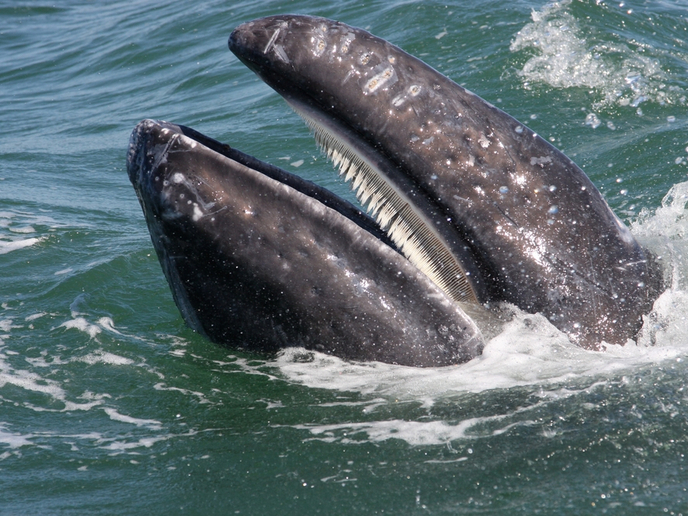Innovative techniques and new data shed light on whale evolution
Baleen whales, or mysticetes, have an unusual way of feeding. Without teeth, they rely on baleen – a comb-like sieve made of the protein keratin – to filter vast quantities of small prey directly from seawater. How and when whales evolved this filter feeding continues to be a mystery. Like all mammals, the earliest whales had teeth, and some of them were fearsome predators. The emergence of modern baleen whales from these ancient raptorial forms is one of the most striking evolutionary transitions in the history of mammals, with enormous implications for global ocean ecology. “However, the mechanics, timing and context of this transition remain highly controversial,” says Dr Felix Marx, coordinator of the EU-funded MYSTICETI project. To address this problem, project partners created a comprehensive data set on the anatomy of living and extinct mysticetes, reconstructed their evolutionary relationships, and used detailed observations on the feeding behaviour and anatomy of whales, dolphins and seals to understand how ancient baleen whales fed. Lastly, they synthesised the results to trace the gradual emergence of filter feeding among early whales. How did whales transition from biting prey with teeth to filter feeding? It was previously thought that baleen first appeared in a family of extinct whales that still had teeth, and that those early forms were capable of both biting larger prey and filter feeding. Researchers showed that this was probably not the case. Instead, ancient mysticetes had teeth as sharp as those of lions and caught their prey by using a combination of biting and suction. Baleen and filter feeding evolved only later, after these early whales had almost lost their teeth. Importantly, this idea fits with not only the evidence from fossils, but also the way living marine mammals feed. As part of this research, project members described several new species of extinct whales and an extremely rare specimen of fossilised baleen. They also showed that ancient mysticetes – unlike their living descendants – formed distinct coastal and offshore assemblages characterised by different feeding strategies. Finally, the scientists provided a detailed study of the second-oldest mysticete ever found, dating back about 34 million years. To their surprise, they found that this whale grew to be rather large – 8-12 m long – even though it wasn’t yet capable of filter feeding. Novel hypothesis for filter feeding evolution in whales Overall, team members proposed an entirely new framework to better understand and classify both baleen whale evolution and the feeding behaviour of living marine mammals. “These advances will directly benefit future studies on marine mammal evolution and feeding ecology,” notes Dr Marx. “More broadly, our results may inform reconstructions of global ocean ecology over the past 30 million years.” “MYSTICETI sheds light on one of the most profound evolutionary transitions in the history of mammals, and illuminates the ecology of the largest animals ever to live,” he concludes. “Given the role of baleen whales as ecosystem engineers, understanding their origins is a crucial piece of the broader puzzle of global ocean ecology.” This research was undertaken with the support of the Marie Curie programme.
Keywords
MYSTICETI, baleen, filter feeding, baleen whale, whale evolution, marine mammal, mysticetes, evolutionary transition, ocean ecology

